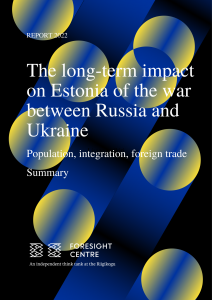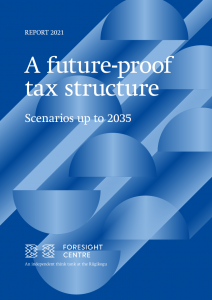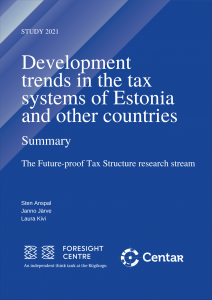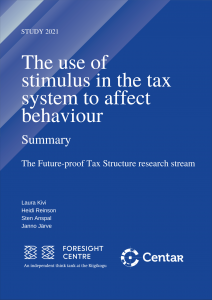The deterioration of the environment and climate warming pose significant risks to the well-being of people in Estonia. In alignment with the European Union’s green transition, Estonia has committed to achieving climate neutrality by 2050. To achieve these goals, mere improvements in existing energy systems may not suffice and fundamental changes are required in how energy is supplied to the population, and in how people move around, eat and live.
Reports
The average environmental footprint of residents of Estonia was found in 2019 to be 3.8 times the limit that the Earth can tolerate, which was higher than the average of 2.9 for residents of Europe. The environmental footprint of average household member in Estonia is bigger than that of European residents from electricity, heating, food and purchases of household appliances, while the environmental footprint from transport was smaller than the European average.
On the anniversary of the Republic of Estonia, 24 February 2022, Russia invaded Ukraine. More than 5 million people have fled Ukraine since the war started, and by the middle of June some 43,000 of them had reached Estonia. It is inevitable that even if the war ends quickly, many of the people who have arrived in Estonia from Ukraine will remain here for a long time, and some of them will never return to their homeland. It is not currently possible to know though when the war will end, how many refugees would have reached Estonia by then, and whether they will be able to or will want to return to their homeland.
The tax systems of developed countries are as a rule very stable and larger changes are made over a long time. However, the world does not stand still. Several trends are undermining tax bases and tax receipts, while an ageing population will need more to be spent on social security.
In this paper, we summarize the main developments of European countries’ tax systems, looking at both longer term trends as well as more significant reforms in recent years. We look at labour taxes (including the personal income tax and social security contributions), corporate income tax, consumption taxes, and property taxes.
The focus of the study is on how the tax system is used to achieve innovation, better health behaviour and a cleaner environment. In particular, we map interventions that seek to influence people on innovation, health and environmental matters through excise duties and taxes, and which (ideally) incorporate behavioural insights that help to achieve better results in terms of innovation, health and environmental goals. In addition, we examine what behavioural insights are built into the broader tax system (with the goal of improving tax compliance and collecting more tax revenue).
People in Estonia are living longer than ever but they are living with health problems, and while the life expectancy of Estonians has risen the most in Europe, the same cannot be said of the number of healthy life years.

 An independent think tank at the Riigikogu
An independent think tank at the Riigikogu 





